Karlsplatz is one of Vienna’s largest squares. It is dominated by a magnificent Baroque church, the Karlskirche, and several cultural institutions – such as the Musikverein and Kunstlerhaus – border the square.
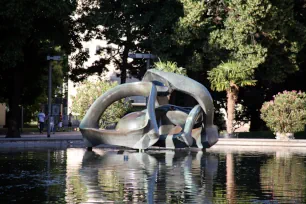
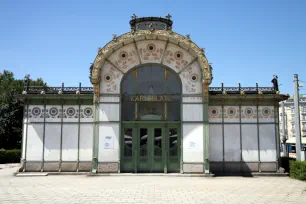
The western half of Karlsplatz is defined by car traffic and is only of interest for the nearby Secession Building and the Naschmarkt, Vienna’s most popular market.
The eastern half of Karlsplatz is occupied by Resselpark, a leafy park dotted with statues of famous Austrians. The park is often crowded as it leads to the large Karlsplatz underground station.
Karlsplatz Pavilions
The main attraction in the park is the couple of pavilions that gave entrance to the Stadtbahn, the former version of Vienna’s metro network. The two pavilions were created in 1898-1899 by Otto Wagner. They were originally located nearby at the Akademiestraße, but moved here in 1960. One of the pavilions is now a café and the other is used for expositions. The delicate design of the pavilions was meant to be in harmony with the nearby Karlskirche. Marble slabs in a green-painted wrought-iron frame are decorated with gold-colored sunflowers and gilded trimmings.
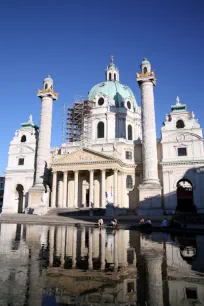
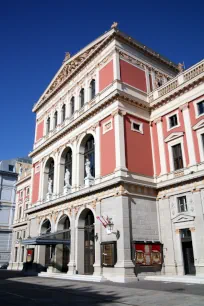
Karlskirche
Overlooking Resselpark is the magnificent Karlskirche, a Baroque church commissioned in 1713 by Emperor Charles VI. The church was built between 1716 and 1737 after a design by Johann Bernhard Fischer von Erlach, who was clearly influenced by his trip to Rome. The two triumphal pillars were inspired by the Column of Trajan. The reliefs on the columns depict scenes from the life of St. Charles Borromeo, to whom the church was dedicated.
A pond in front of the church is embellished with a large modern sculpture entitled «Hill Arches». It was created by Henry Moore, who donated it to the city of Vienna in 1978.
Musikverein and Künstlerhaus
To the south, Resselpark is bordered by the Technische Hochschule, a school housed in an imposing building with a neoclassical facade decorated with large sculptures. Two well-known Viennese cultural institutions border the north side: the Musikverein and the Künstlerhaus. The Musikverein is a concert hall, home to the Wiener Philharmoniker.
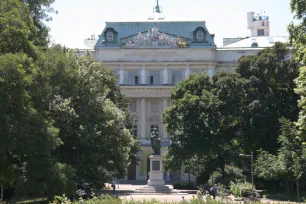
The neoclassical building was designed by Theophil von Hansen and completed in 1869. Adjacent to the Musikverein is the Künstlerhaus, an exposition hall which first opened in 1868.
History Museum
The Historisches Museum der Stadt Wien (History Museum of Vienna) is housed in a dull post-war building at the east side of the square, near the Karlskirche. Here you’ll find a collection of archaeological finds from the Roman era, Ottoman items obtained during the siege of Vienna in 1683 as well as many paintings, scale models, postcards and photographs depicting Vienna through the ages.
Some items of note include Gothic stained-glass windows from the Stephansdom – rescued from a fire in 1945 – and reconstructed apartments of famous Viennese citizens, such as architect Adolf Loos. The museum also has a collection of art, including works from famous Viennese artists including Gustav Klimt and Egon Schiele.
Secession Building
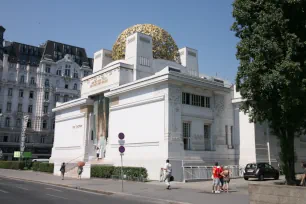
More works of these artists can be found in the Secession building, located near the west side of Karlsplatz, towards the Naschmarkt. This remarkable building was designed by Joseph Maria Olbrich in the Jugendstil style, the local version of Art Nouveau. It was built in 1898 as the headquarters of the Secession, an art movement that broke ties with classical art.
Its most famous proponent was Gustav Klimt, of whom several artworks can be found inside the Secession building. The structure is crowned with a sphere of gilded intertwined laurel leaves. Flower motifs and small sculptures decorate the white painted facade.
- Next: Freyung
- More Sights & Attractions in Vienna

